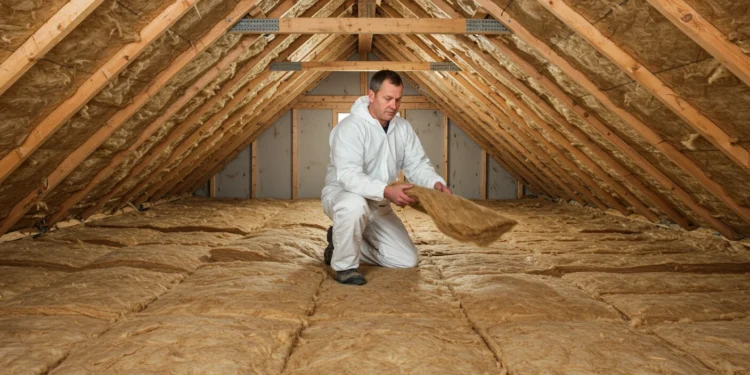Property owners or managers, contractors, and roofing specialists know the importance of safe and easy access to every part of a building, especially the roof. While there are several ways to get to the top, one solution stands out for its durability, convenience, and safety: the roof hatch.
Linking the attic to the roof with a roof access hatch is often the best choice for new buildings and renovation projects. It provides reliable and safe access from inside a building.
Whether for regular inspections, emergency exit, or simple roof maintenance, this setup saves time, reduces the risk of injury, and enhances workflow.
What Exactly Is a Roof Hatch?
A roof hatch is an access point built into a building’s roof that lets you go straight onto the rooftop from the inside (like an attic or top floor). What sets a quality roof hatch apart is its durability and reliability.
Many roof hatches are made from strong materials like steel and can withstand tough weather, resist corrosion, and lock securely. They often feature weather seals and insulation properties.
Benefits of Attic-To-Roof Access
Here’s how to get the most out of roof hatch-to-attic access.
Simplifies Roof Maintenance
The biggest upside of a direct attic-to-roof connection is how much it improves roof maintenance. It makes conducting regular checks, small repairs, gutter cleaning, antenna installation, and sometimes major overhauls much easier.
Improves Safety
Without a roof hatch, access often requires exterior ladders, which can be bulky and unstable. They pose a big risk of falling, especially in bad weather.
Enables Emergency Access
In an emergency, like storms or leaks, reaching the roof quickly from the inside is invaluable. A hatch provides an efficient route for access for immediate inspection or urgent repair.
Protects Building Integrity
Climbing on and off exterior edges can damage gutters, siding, or roof edges over time. Using a hatch centralizes roof access and minimizes wear on vulnerable areas.
Roof Hatches vs. Ladders vs. Exterior Access: Quick Comparison
Here’s a direct comparison of roof access options to show why a built-in roof hatch is the better choice.
| Feature/Method
|
Portable Ladders | Exterior Access (e.g., permanent exterior ladder) | Built-In Roof Hatch |
| Safety | High fall risk, instability | Moderate fall risk, exposed to weather | Very safe, secure exit, less exposure |
| Convenience | Needs setup, often needs two people | Permanently exposed, needs weather protection | Always accessible, quick, one person can use |
| Security | Offers little to no real security | Can be climbed by unauthorized people
|
Locks securely from inside and often outside |
| Weather Impact | Dangerous in rain, ice, and wind | Exposed to all weather | Interior access minimal weather exposure during use |
| Appearance | None | May affect aesthetics and require special design work | Blends in well with the roof when closed |
| Initial Cost | Low (for the ladder itself) | Medium to high (for custom work/installation) | Medium to high (for a good quality unit and installation) |
| Long-Term Value | Features limited overall value | Adds some value, but with downsides, e.g., security and looks | Adds significant value, boosts property function, and safety |
Ideal Buildings for Roof Hatch Installation
While almost any building can benefit from a roof hatch, some are especially well-suited for one:
- Commercial Buildings: Roof hatches are most common in commercial buildings. Commercial roofs often house HVAC units and communication equipment and need regular checks. A roof hatch provides efficient, safe access.
- Multi-Story Residential Buildings: Many apartment complexes, condos, and townhouses have shared areas and utilities that need regular maintenance. Roof hatches are especially suitable for residential buildings with flat or low-sloped roofs.
- Homes With Flat or Low-Slope Roofs: Modern buildings with flat roofs often integrate amenities like solar panels, green roofs, or HVAC units. A roof hatch is the most practical and attractive way to access these areas.
- Properties With Attic Space: Any building with an accessible attic below the roof fits perfectly. It provides a direct and secure path to the roof: no need for outside ladders.
- Buildings Featuring Rooftop Amenities: If a building has a rooftop deck, garden, or recreation area, a roof hatch provides a complementary entry point.
Choosing the Right Roof Hatch for a Building
When selecting the right roof-to-attic access doors and panels for any build, consider the following:
Size and Opening
The hatch’s opening must be big enough for people and any tools or equipment they might need on the roof. Standard sizes are common, but custom sizes are available for special needs.
Material
Aluminum is lightweight, rust-resistant, and well-suited for coastal areas or humid climates. Steel is heavier, stronger, and often coated to prevent rust. It’s excellent for high-traffic areas or where security is important.
Insulation and Seals
These are important for energy efficiency and stopping water from getting in. Look for good insulation (high R-values) and continuous rubber seals like EPDM gasketing.
Hardware, Safety, and Security
Stainless steel hinges, strong latches, and inside/outside locking options are essential for security and long life. Spring-assisted operation ensures the hatch opens and closes easily and safely with just one hand.
For safety and compliance, prioritize models with safety railings and non-slip surfaces. OSHA-compliant rail systems add another layer of security for workers.
Curb Height
This is the hatch’s vertical wall. It should be tall enough to prevent water from pooling around the opening and provide proper insulation.
Weight Capacity
When closed, ensure the hatch can safely hold the weight of a person walking on it, especially in a busy area.
Conclusion
For homeowners, builders, and roofing contractors, a roof hatch is a key part of a well-designed and safely maintained building. These components improve safety, simplify maintenance, and add significant long-term value to any property by offering access from the attic to the roof.
Whether designing a residential property with rooftop utilities or constructing a commercial facility that requires regular roof access, integrating a roof hatch is a smart investment.












